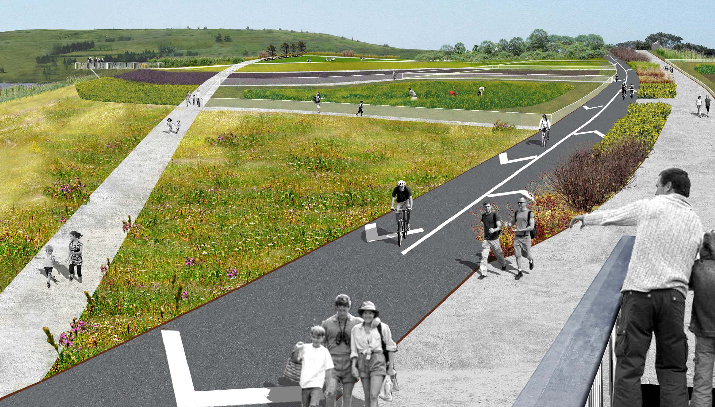Freshkills Park, Without Borders

Where does a park end and a neighborhood begin? For many parks in New York City, the line has been pretty rigid. Tall gates and fences have separated a number of the city’s parks and playgrounds from adjoining sidewalks, creating literal and symbolic divides between people and green spaces.
With this in mind, NYC Parks launched Parks Without Borders in 2015. Shaped by public interest, the program is focused on redesigning entrances, edges, and park-adjacent spaces in parks and improving neighborhoods by extending the beauty of parks out into communities. The May 2016 Parks Without Borders Summit brought together leaders from a range of disciplines to envision the future of parks and public space. The summit included the announcement of eight parks selected to showcase the Parks Without Borders design approach.
Charles A. Birnbaum was one of the speakers at the Parks Without Borders Summit. In “Urban Parks: From Dumping Grounds to Centers of Energy,” Birnbaum looks at how the initiative has come at a time when New York City’s parks are becoming beloved destinations after decades of neglect. His examples include the revitalization of Central Park and Prospect Park, as well as recent additions like Brooklyn Bridge Park and Governor’s Island.
Birnbaum also points out that this shift isn’t specific to New York City. With projects like Chicago’s riverfront and Houston’s Buffalo Bayou Park, access to parks across the country is increasing as “parks are becoming more porous (breaking the edges), and new networks and systems are created, and sites are capped (building over roadways and similar infrastructure).”
All of this is happening as Freshkills Park transforms from a landfill to a park in measured and thoughtful phases. In many ways, Freshkills Park lies at the heart of the Parks Without Borders approach, as the project thinks about the park beyond the limits of just its boundaries. The New Springville Greenway, the 3.2-mile bike and pedestrian path on the park’s eastern edge, is an example of that seamless movement between a park boundary and the urban grid, extending to surrounding communities.
Freshkills Park is also an example of how New York City is finding park space in areas not conventionally thought of as parkland. Building over the former Fresh Kills Landfill creates new and creative land uses, refusing to allow jurisdictional boundaries to limit the areas designed and utilized as park space. The plan to open the Park over time is designed to allow the park to take shape from the outside in, creating new open edges to the site and allowing the site to reveal itself further as access becomes more open over time.
In his article, Birnbaum refers to how highways and other major developments can create “scars” and “wounds” in cities, impacting connectivity, public health, and a number of other factors. As a park built on a landfill, Freshkills Park is one example of how parks are a way to heal those injuries. Programs like Parks Without Borders are proving that parkland is an invaluable tool for breaking edges and building over infrastructure, mending the fabric of our urban landscapes.




